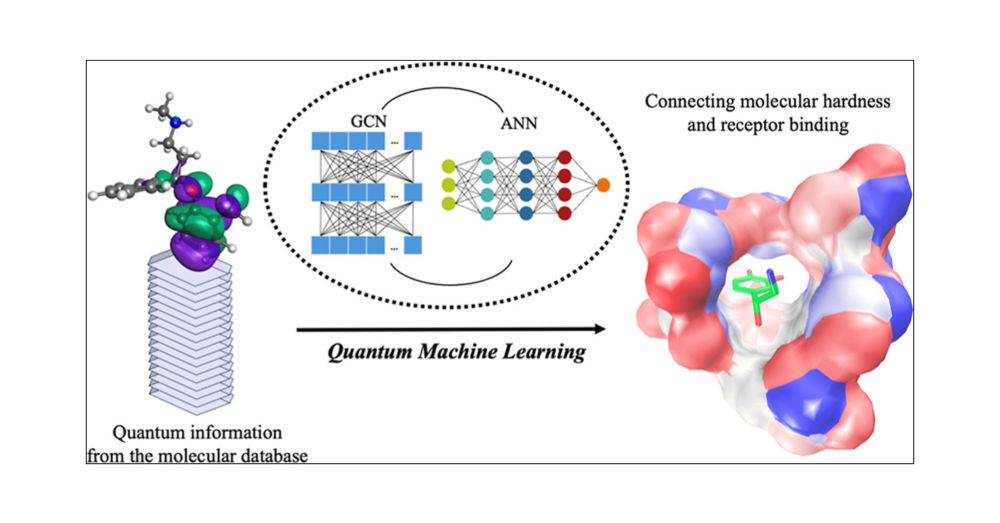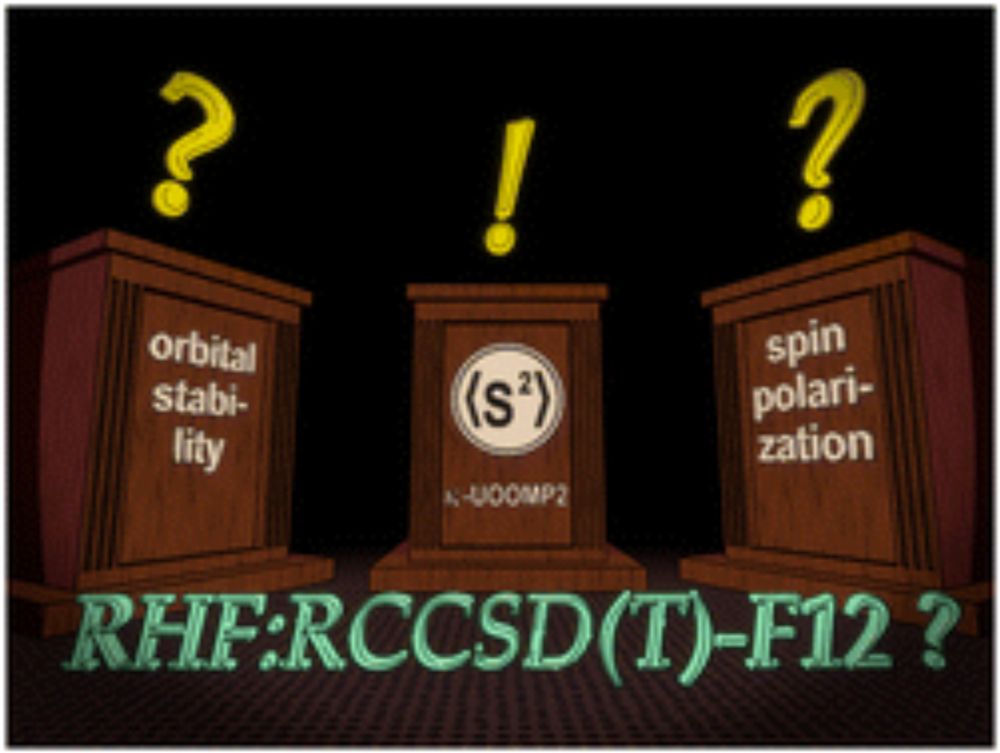
Read this preprint in which Manisha and Prashant Uday Manohar present their FNO implementation for EOM-CCSDT for IP, DIP, EA, and DEA. Their implementation is available in Q-Chem 6.3! arxiv.org/pdf/2509.141...
Try FNO-CCSDT yourself in Q-Chem: q-chem.com/try/
07.10.2025 16:17 — 👍 0 🔁 0 💬 0 📌 0

Coming soon to Q-Chem: Periodic boundary conditions! Read this preprint from researchers at Harvard, who present a new method for modeling electrochemical interactions at solid-liquid interfaces: doi.org/10.48550/arX...
Learn more about PBC in Q-Chem: q-chem.com/webinars/73/
01.10.2025 20:45 — 👍 1 🔁 0 💬 0 📌 0

Don't miss the next Q-Chem webinar this Friday! Xinchun Wu will be discussing the exciting work she did at Q-Chem this past summer, including constrained CASSCF for studying nonadiabatic systems and tight-binding calculation features. Register here: zoom.us/webinar/regi...
30.09.2025 18:04 — 👍 0 🔁 0 💬 0 📌 0

Congratulations to Q-Chem developers on their recent publication, in which they develop non-orthogonal quasi-degenerate perturbation theory to enable XPS calculations for L-edge and beyond! doi.org/10.1021/acs....
Try the new Q-Chem 6.3 release today: q-chem.com/try/
24.09.2025 20:47 — 👍 1 🔁 0 💬 0 📌 0

Text reads: "Q-Chem 6.3.1 is here! Upgrade today to enjoy improved performance and usability, and check out the changelog to learn about the latest features!"
Q-Chem is pleased to introduce our latest release, Q-Chem 6.3.1! For a full list of updates, fixes, and resolved issues, please review the release log here: q-chem.com/support/rele...
If you want to try Q-Chem 6.3.1, you can request a demo license here: q-chem.com/try/
23.09.2025 20:04 — 👍 0 🔁 0 💬 0 📌 0
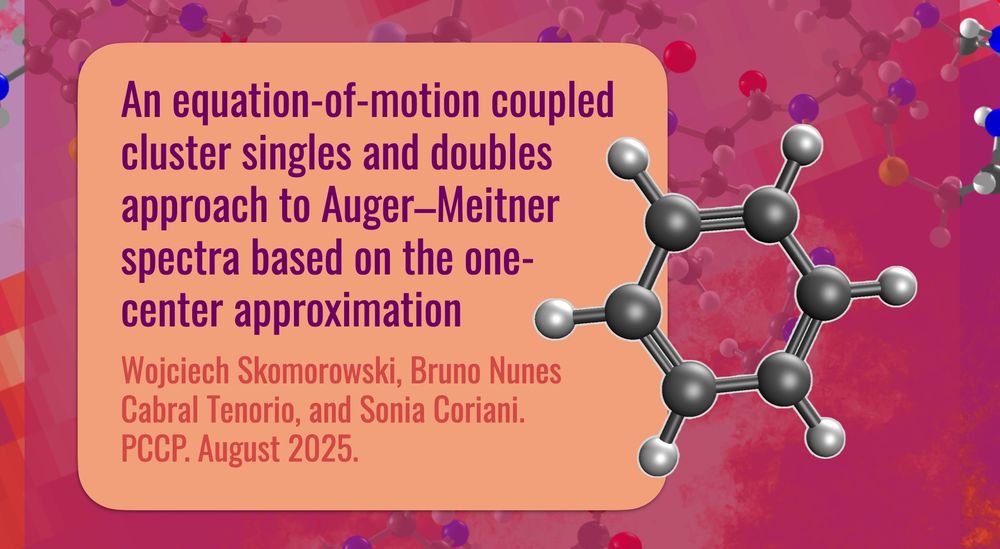
In this paper, Q-Chem developers present a novel EOM-CC-based approach for computing Auger decay rates. Their exciting new implementation was done in Q-Chem! doi.org/10.1039/D5CP...
Interested in becoming a Q-Chem developer? Learn more here: q-chem.com/about/team/d...
15.09.2025 19:48 — 👍 0 🔁 0 💬 0 📌 0

Q-Chem developers use TDDFT-1D in Q-Chem to study the photodynamics of TCNE-HMB, gaining useful insights with exciting implications for the applicability of Marcus theory to photochemistry in non-innocent solvents. doi.org/10.1021/acs....
Try Q-Chem: q-chem.com/try/
12.09.2025 20:58 — 👍 0 🔁 0 💬 0 📌 0
Q-Cloud: Q-Chem On AWS | Q-Chem
Don't forget, you can now run Q-Chem calculations easily on AWS with Q-Cloud! The command line interface makes it quick and easy to set up and launch a cluster in the cloud. Learn more here: q-chem.com/explore/qclo...
11.09.2025 21:57 — 👍 0 🔁 0 💬 0 📌 0

In this paper, KS-DFT and TAO-DFT in Q-Chem are used to study vibrational stabilization in cyclacene carbon nanobelts. Static correlation (via TAO-DFT) is found to be essential for an accurate description. doi.org/10.1021/acs....
Learn about TAO-DFT: q-chem.com/explore/dft/...
08.09.2025 19:57 — 👍 1 🔁 0 💬 1 📌 1

Don't miss tomorrow's webinar from Mathew Chow! He will discuss NEO-DFT and real-time NEO-TDDFT methods, along with NEO quantum mechanical/molecular mechanical approaches. Register: zoom.us/webinar/regi...
20.08.2025 20:33 — 👍 0 🔁 0 💬 0 📌 0

Join us next week for the 2025 Wormit Award Webinar, to be presented by awardee Mathew Chow! He will discuss NEO-DFT and real-time NEO-TDDFT methods, along with NEO quantum mechanical/molecular mechanical approaches. Register here: zoom.us/webinar/regi...
13.08.2025 20:41 — 👍 1 🔁 0 💬 0 📌 0

Text reads: "Lab Exercises
Designed to be used in physical chemistry classrooms with our free IQmol server.
Webinar & Lecture Recordings
Browse our archive of recordings.
Workshop Materials
Recordings and materials from previous user workshops are available for free on our website."
As the academic year starts back up again, don't forget about Q-Chem teaching and learning resources! We provide a variety of free resources on our website, including labs, webinars, and course materials from previous Q-chem workshops. Check it out here: www.q-chem.com/learn/
11.08.2025 19:21 — 👍 1 🔁 0 💬 0 📌 0
WebMO Demo Server
Job Time Limit: Since the WebMO Demo Server is a shared resource, jobs are limited to 30 sec of CPU time.
WebMO 25 is now available! It has a variety of new, exciting features that make its web-based interface to computational chemistry packages even better—and best of all, it now includes support for our latest release, Q-Chem 6.3!
Run calculations for free on their demo server: webmo.net/demo/
06.08.2025 17:44 — 👍 0 🔁 0 💬 0 📌 0
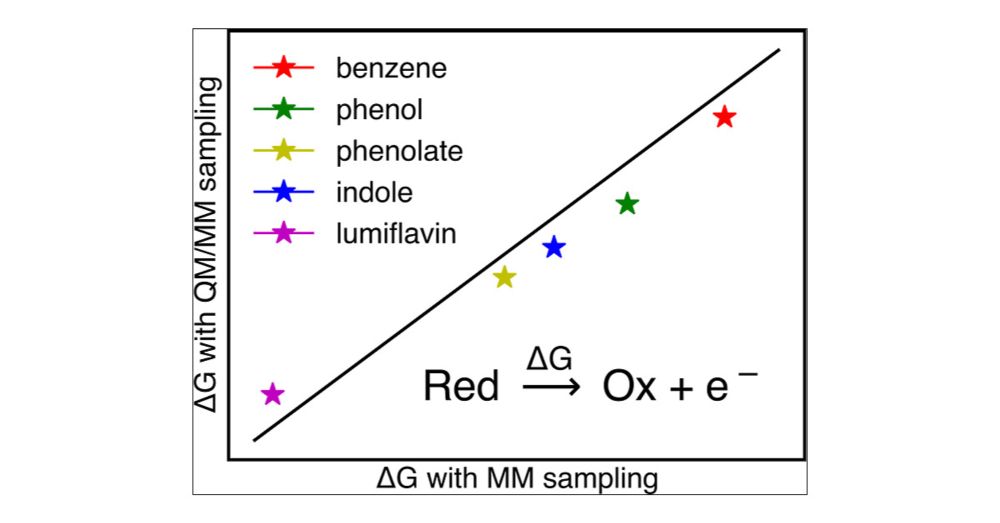
Effects of Conformational Sampling on Computing Redox Properties Using Linear Response Approach
Redox processes are an important step in many chemical and biochemical reactions. One simple approach to calculate the free energy change of a redox process is linear response approximation (LRA). However, variability in conformational and energy-gap sampling poses a challenge in balancing computational cost and accuracy. Herein, we calculate the redox properties of the one-electron oxidation processes for small, biologically relevant redox-active molecules (e.g., phenol, phenolate, benzene, indole, lumiflavin) in aqueous solution using two conformational sampling strategies. We sampled the conformations using molecular mechanics (MM) and hybrid quantum mechanics/molecular mechanics (QM/MM) simulations to investigate how these techniques affect redox properties. We also performed QM/MM energy-gap sampling while varying the QM region to investigate its impact on overall redox behavior. We observed free energy of oxidation, and consequently, oxidation potential differs consistently by ∼0.2–0.4 V between QM/MM and MM sampling for the molecules under investigation. Overall, we infer that computationally cheaper MM sampling would be adequate for computing the redox properties of small molecules when corrected by a system-specific correction factor.
In this recent work, researchers compare MM and QM/MM approaches to conformational sampling for the calculation of redox properties. They use Q-Chem for the QM/MM single-point energy calculations.
S. Maity, R. Sarangi, and A. Acharya. J. Phys. Chem. B. 2025.
doi.org/10.1021/acs....
05.08.2025 17:42 — 👍 1 🔁 0 💬 0 📌 0
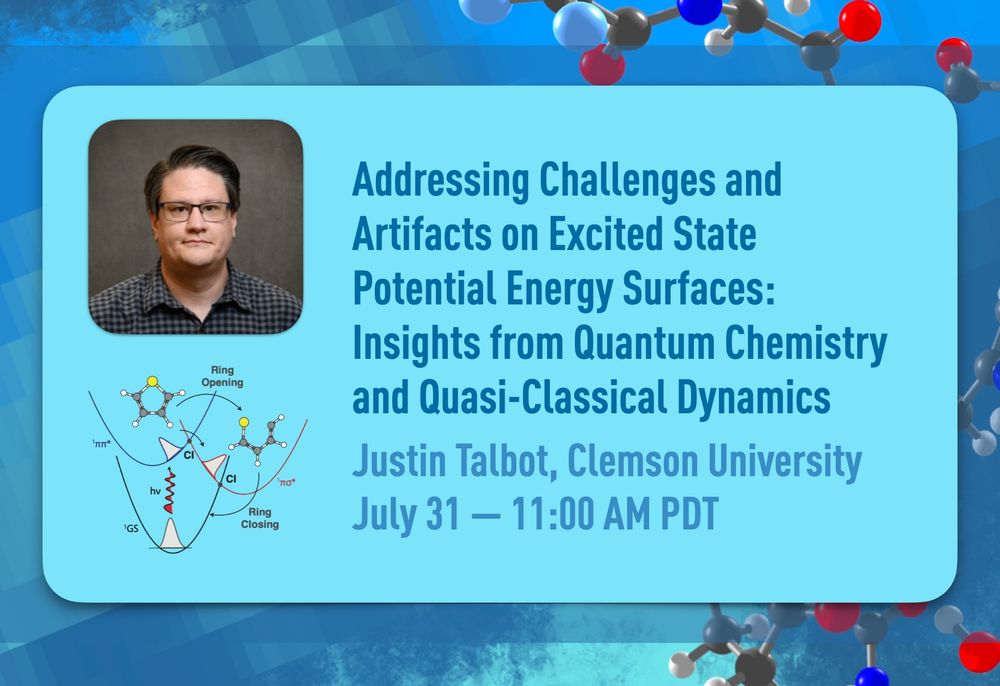
Join us on July 31 at 11AM for our Nick Besley Award Webinar! The webinar will be presented by award winner Prof. Justin Talbot; he will be discussing his recent work on developing methods for studying excited state potential energy surfaces. Register: zoom.us/webinar/regi...
30.07.2025 22:55 — 👍 0 🔁 0 💬 0 📌 0
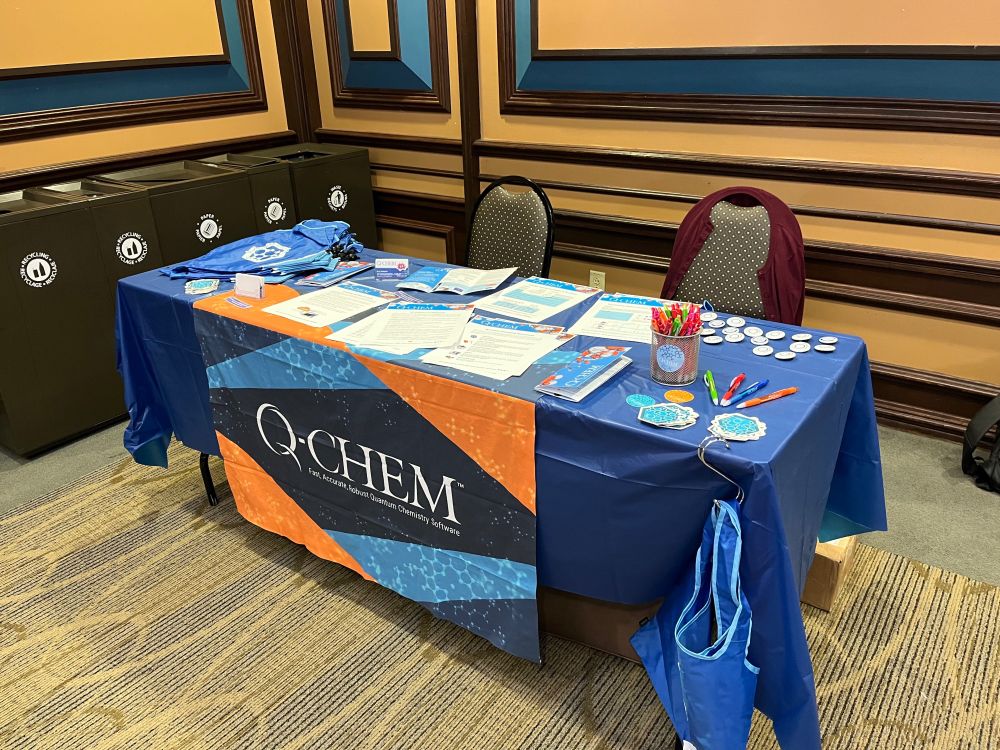

Q-Chem was honored to be one of the sponsors of the 2025 MERCURY Conference at UPitt last week! We were excited to hear the multitude of ways that many of these students and professors are using Q-Chem in their ongoing research work. Thanks to those who stopped by!
28.07.2025 23:58 — 👍 0 🔁 0 💬 0 📌 0
"We propose our orbital stability analysis-based 3-tier classification workflow as a best-practice protocol for DFT calculations in chemical kinetics." (3/4)
21.07.2025 17:28 — 👍 0 🔁 0 💬 1 📌 0
"By analyzing spin-symmetry breaking at both the SCF and κ-OOMP2 levels, we classified reactions based on the nature and extent of electron correlation, traced key sources of error, and addressed them to the degree possible." (2/4)
21.07.2025 17:28 — 👍 0 🔁 0 💬 1 📌 0
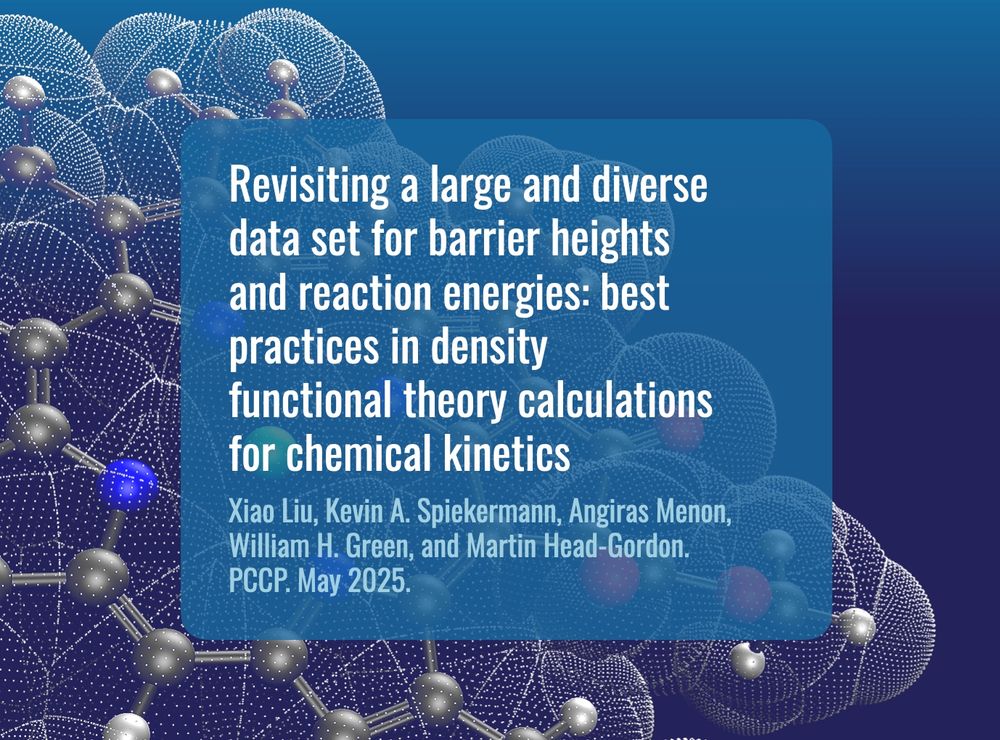
Text reads: "Revisiting a large and diverse data set for barrier heights and reaction energies: best practices in density functional theory calculations for chemical kinetics. Xiao Liu, Kevin A. Spiekermann, Angiras Menon, William H. Green, and Martin Head-Gordon. PCCP. May 2025."
Congratulations to Q-Chem developers and collaborators on their PCCP Hot Paper!
From author Xiao Liu: "In this work, we present a thorough investigation into the unexpectedly large RMSDs for the ωB97X-D3 functional previously reported on the RDB7 dataset (~12,000 reactions)..." (🧵1/4)
21.07.2025 17:28 — 👍 4 🔁 2 💬 1 📌 0
Try on Your Own Computer | Q-Chem
Try Q-Chem For Free
Q-Chem offers a free, fully-featured month-long trial license. You will be able to run Q-Chem on your laptop, workstation, cluster, or supercomputer. No obligation. No charge.
This week, we featured papers that used various Q-Chem features, including TD-DFT with SOC, X-ray spectroscopy, CAP-EOM-EA-CCSD, and efficient gradients for localized diabatic state energies and couplings. Want to try these yourself? Request a free trial: q-chem.com/try/
18.07.2025 17:43 — 👍 0 🔁 0 💬 0 📌 0
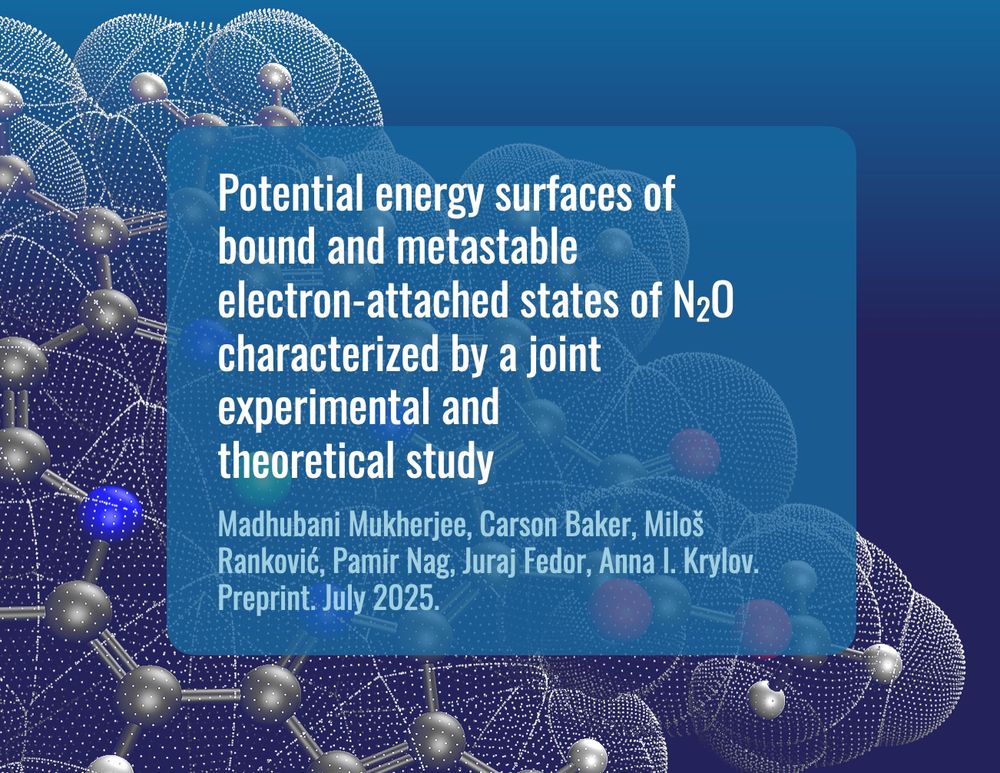
Authors investigate electron scattering in nitrous oxide, using Q-Chem's CAP-EOM-EA-CCSD and ezFCF to explain features of the experimentally-observed experimental two-dimensional electron energy loss (EELS) spectra. doi.org/10.26434/chemrxiv-2025-m5dnl
17.07.2025 18:13 — 👍 0 🔁 0 💬 0 📌 0
Magnus Hanson-Heine.
Quantum Chemist.
Owner of the Headington Shark House.
▶️: http://youtube.com/@TheHeadingtonShark 👤: http://facebook.com/HeadingtonShark
Physics, HPC and everyday’s life.
Made in Rome, living in Bologna.
(all opinions expressed here are my own)
Posts on Raman spectroscopy and Raman microscopy of materials. Maintained by Fernando Agulló-Rueda (https://bsky.app/profile/fagullorueda.bsky.social)
Computational chemist/sort of biochemist | Current postdoc at the University of Memphis | PhD from the University of Melbourne | 🇦🇺🏳️🌈
Computational chemist with a Bayesian taint. Working on foundational cross-language tools at @labcosmo.bsky.social.
More @ https://rgoswami.me
Singapore's biggest #MNTwins fan! Computational Chemist from Minnesota living in Singapore.
Deep learning, computational chemistry, generative modeling, AI for Science. Principal Research Manager at Microsoft Research AI for Science.
PhD student at the Computer Chemistry Center in FAU
Molecular Dynamics Simulations on DNA Repair Systems
PostDoc @ AstraZeneca | Computational Chemistry and Machine Learning
Welcome to the official BlueSky account for the Virginia Tech Department of Biochemistry! 🔬 We'll be sharing exciting research updates, faculty spotlights, student achievements, and much more. Follow along to stay connected!
🇫🇷Theoretical & Computational Chemist ⚛️🧪🖥️🧬| #CompChem | #CompBio | #HPC | #ChemSky | #CompChemSky| #University | #Chemistry | #BioChemistry | #ESR | #URCA | #ComESR | #VeilleESR | #VeilleEN
Personal account💻📱
🧐Reposts are reflections, not endorsements🤔
Theorist, usually chemistry.
Assoc. Prof @StJohnsU Chemistry.
Pronouns: he/him/él
Mexican American. 🇲🇽🇺🇸
Scientific Editor, RSC. Views my own.
Background in computational chemistry and education.
Sci-fi, blackgaze, queer horror books, MMOs - including an insistent love of Phantasy Star Online 🏳️⚧️
Computational Chemist. Molecular Chemistry. University of Münster. Cyclist 🚴🏻♂️
biology + computers + a leavening of snark | 👨👨👧👧🏳️🌈| nanomedicine | cancer genomics 🧬 | ML | biomaterials | #compchem #matsky #chemsky #ai4science #materialsinformatics #md | startups | @Cal 🐻 @Stanford @UniversityOfOxford @OxfordNano (swimsf on the Bad Place)
She/Her. Schmidt AI in Science Postdoctoral fellow at University of Oxford with Duarte group. Ab initio MD and ML for molecules in complex environments.
Postdoctoral Fellow at @thematterlab.bsky.social with @aspuru.bsky.social | PhD in Theoretical Chemistry | ex FCI scholar & Digital Chemistry @merckgroup.bsky.social
Senior scientist with @letigonzalez at University of Vienna, SHARC and iStOMPS enthusiast
Engineer pretending to be a Computational Chemist working on how light and stuff interact at University College London - husband of @jelfschem.bsky.social - all views are my own 🇳🇱🇪🇺🇬🇧


















